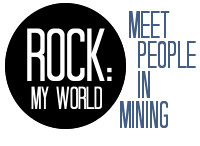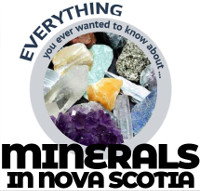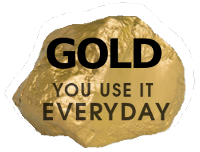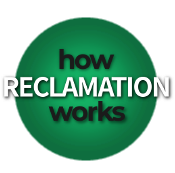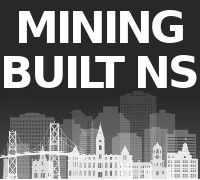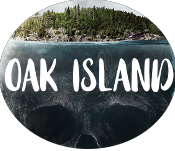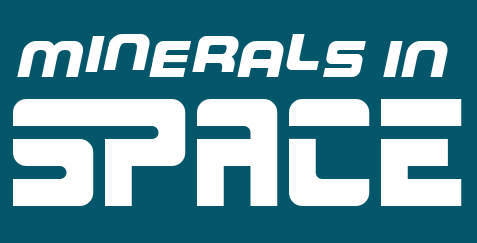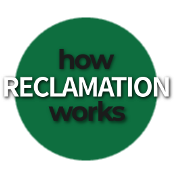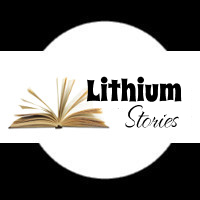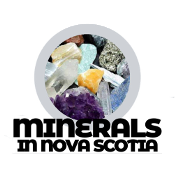- Why Mining Matters
- Jobs
- Safety
- Environment & Operations
- FAQ
- Links
- Fun Stuff
You are here

Gallihar and Dimock
Mr. Death
The Guilty Grenos
James Mitchell
Hugh McAskill
Gold Grows Under Shrubs?
Unexploded Dynamite
Tangier’s John Murphy
Joe Howe Dimock
Chats with Pioneer Miners
Charles Annand
John Scott Williams
Nicholas Fitzgerald
Chief Lonecloud
Pistols and Gold Mines
James MacDonald’s Thefts
John Vaughn
Herbert Dixon and the Halifax Explosion
James Bishop
Neily's Scandals
Waverley in 1934
Discovery of Gold at Dufferin
Hurricane Island
Fletcher and Faribault
Jack Munroe
Mine Apprentice Project
Small Gold Districts
15 Mile Stream
Tributers
E. Percy Brown and the Brookfield Mine
Barachois
Nova Rich Mines
Shad Bay Treasure Hunt
Montague 1937 Accident
Father Lanigan’s “Prospect”
George V. Douglas
The Stewart Brothers
Goldboro
Moose River's Touquoy Mine
Camerons Mountain
Jim Campbells Barren
Stanburne's Puzzling Gold Mine
Pockwock
Beaverbank Lake
Banook Mining Company
Deep Gold Mining
Wellington
Arsenic and Gold
Dynamite
War of Words
King of the Klondike
Oliver Millett
Kempt Gold Mining Company
Carleton
The Memramcook Fiasco
Love and Gold in Oldham
Montague 1893 Disaster
Central Rawdon Consolidated Mines
Cochrane Hill
Amateurish Early Gold Mining
Sable Island Gold
The Sea Wolf
Trueman Hirschfield
Alexander Heatherington
Prospector Joe Cope
Killag Quicksand
George W. Stuart
Wellington
Billy Bell
Cooper Jim Mine
South Branch Stewiacke
Walter Prest
Lake Charlotte
Acadia Powder Mills Company
The Ovens Anticline
Moose River Anticline
Avon Mine Explosion
Montague
Waverley Claims Dispute
Avon River
Moose River Disaster
Mooseland Scam
New York and Nova Scotia Gold Mining Company
Rosario Siroy and the South Uniacke Gold District
Blockhouse
Killag Gold District
Miller Lake
Baron Franz von Ellershausen
Mooseland: Nova Scotia’s first Gold Discovery
United Goldfields of Nova Scotia
Pleasant River Barrens Gold District
Lochaber Gold Mining Company
Rawdon Gold Mines
MacLean Brook
Gold in Clayton Park?!
Forest Hill
Meguma vs. Placer Gold
Uniacke
Voglers Cove
Gold River
Moosehead
Goldenville
Westfield
Indian Path
Harrigan Cove
Centre Rawdon
Nova Scotia’s Gold Mining History
WWII Gold
Middle River Gold District
Early Gold Discoveries
Halifax 1867
Paris Exhibition 1867
Mining and Tourism
An Act relating to the Gold Fields
Molega Gold District
Brookfield Gold District
Gays River
Halifax Gold
Caribou Gold District
Renfrew Gold District
Oldham Gold District
Whiteburn Gold District
Country Harbour Mines
Waverley Gold District
Robert Henderson and Klondike Gold
George Mercer Dawson
Cow Bay Gold District
Lake Catcha Gold District
Wine Harbour Gold District
Mr. Death
Death came to Nova Scotia in 1894. James Death, that is.
Mr. Death, as Nova Scotian newspapers often referred to him, was born in Cheshunt, England, in 1851. He lived in Europe, Asia, Africa, America and Australia during the 15 years prior to his arrival in “North Dartmouth.” He described himself in May 1894 as “a recent arrival in this country” and said, “I am a stranger here.”
Little is known about what caused him to travel so extensively in an era when such travel was unusual. However, we do know that he was involved in mining for at least some of those years, although that was not his focus in Nova Scotia. Here he worked for brewers S. Oland & Sons.
Drawing on his mining experience in Australia, Death made a suggestion that he believed would help make Nova Scotia a “mining capital,” particularly a gold mining capital. In May 1894, he published a long letter in the Halifax Herald in which he argued that Nova Scotia should follow Australia’s and New Zealand’s example and adopt “no liability” companies to help increase funding for mining.
Mining is a capital-intensive business, requiring a lot of upfront costs, fees, expensive equipment and significant numbers of consultants and employees. It can also be a risky investment since the path from mineral discovery through to mining is complex, permitting is expensive and time-consuming, capital is uncertain, and mineral prices are cyclical. Understanding a deposit’s geology can be difficult and costly, and various other factors can impact the success of exploration and mining.
Only one in every 10,000 mineral exploration projects ends up being a mine. That's why it is important to develop mineral deposits when we can, both for the essential materials they provide and the jobs and economic benefits they create.
To encourage investment, shares in historical exploration companies were often issued partly-paid to finance exploration, with later calls made to raise additional funds if the mineral prospect became profitable. In other words, investors paid part of the cost of the shares up front, and only paid the balance if the company continued to do well. This is still common today for exploration companies.
Historically, the system meant only the wealthy could afford the cost and risk of investing in exploration and mining because they were liable for additional payments. As a result, many of Australia’s, New Zealand’s and Nova Scotia’s historical mines were funded, in whole or in part, with foreign capital from countries like England and the United States.
However, Australia started allowing “no liability” companies for mining/exploration startups in 1871 in Victoria. This allowed investors to buy shares but did not obligate them to invest further when additional calls were made on shareholders. Instead, shareholders could just forfeit their shares, allowing them to be resold to other investors at public auction, with the money raised going to the company. While forfeiting their shares meant they lost their initial investment, it capped their risk because they were no longer liable for additional payments.
No liability companies largely replaced limited liability companies in Australia’s and New Zealand’s mining industries because they had several benefits:
No liability allowed mining companies to raise more money, and to raise it from within Australia and New Zealand instead of being dependent on capital from other countries. This reduced the number of companies that went bankrupt due to wealthy investors declining to financially support them through tough times, such as when gold output dropped. Forfeited shares regularly changed hands, which spread risk over a larger number of investors, and increased cash flow to companies.
No liability also allowed the average person to invest since they could buy a small amount of stock without obligation to invest additional funds. The shares were usually penny stocks - most literally cost a penny - so they were accessible to “the butcher, baker and candlestick-maker,” as Death put it. Small investors opened up a new source of capital for companies.
Death argued that Australia’s and New Zealand’s experience with no liability companies proved that Nova Scotia’s mining industry could flourish under this model. He claimed, “it has rendered mining the property of the many instead of confining it to a few speculative capitalists and has given employment in Australia to a hundred thousand hands.”
Death’s suggestion was supported by some, including Nova Scotian author and historian Robert R. McLeod, who complained that Halifax’s “monied men” were too reluctant to invest locally and as a result, “it has been a fossil city for years – as dead as Sodom or Pompeii.” He said it was “A mean, howling, miserly stocking-leg parsimony that thinks only of self and regards all others in the light of possible objects to be squeezed for their benefit. It is a fine thing to be rich in this world’s goods, but it is a damnable thing to make no other use of riches than to minister to one’s own selfish comforts and pleasures.”
However, Death’s suggestion also faced some opposition. The Methodist church’s newsletter contained an article in April 1895 that called on religious societies to oppose no liability companies “on the ground that it will tend to ruin young men in a responsible position by the opportunities for speculation which it offers…Halifax will become the gambling hell of the Dominion.”
J. E. Wilson rejected this suggestion, writing in the Halifax Herald the following month, “How, I may ask, would a sound law simplifying and legalizing the formation of mining companies lead to gambling? Betting is gambling, but buying and selling stocks is not, any more than dealing in bank, gas, water, coal or any other kind of stock, in which even our clergy might deal without risk to their reputation.”
Nova Scotia did not adopt no liability companies. In fact, the no liability model never expanded beyond Australia and New Zealand despite how successful it was there. Both those countries still have no liability companies, mostly in the mining sector.
In January 1895, Death announced in newspaper ads that he was changing his last name to D’Aeth, the ancestral version of his name.
James D’Aeth, as he was then called, passed away in March 1896 in Lunenburg after spending a week there. According to reports in the Halifax Herald and The Progress, he had “strange behaviour for a few days previous to his passing away. The unfortunate man had been seized with what he described as ‘tremors’ and the grim messenger was not to him unexpected. He was found dead in his room in the Central house sitting in a crouched position.”
Shortly before dying, D’Aeth had written a note in pencil, which was found in his room:
“To-night, on the wharf, I have had a slight touch of tremor, a sort of fit, from an Indian sunstroke ten years ago (the third occasion since leaving India). If any paralytic shock or stroke follows, which is frequent, case is hopeless. Indian sunstroke sequences cannot be cured. I have had a scientific education. I had many consultations with Anglo-Indian specialists, nor can I find that two cases of sequences are exactly alike. Send me to the near asylum – a life-long burden. For the information of the medical profession, I may say that every June or July I feel a species of rheumatism in the shoulder (right side). The tremors are succeeded by a desire to throw off the clothes – then out of breath. Father died of chronic consumption. Never yet had a paralytic stroke, but have heard all about them. Those interested consult the Anglo-Indian military doctors, Halifax.”
(Indian sunstroke was a term sometimes used by Europeans to describe sunstroke, or heatstroke, gotten in India, where temperatures often far exceeded what Europeans were used to. It sometimes caused mental health issues like delirium, which is why D’Aeth suggested he could be put in an asylum.)
An inquiry by Dr. Ross determined that D’Aeth died of a stroke.
While much has changed in mining since D’Aeth’s time, the industry is still very capital-intensive today. Most trucks and heavy equipment at a modern Nova Scotia mine or quarry cost between about one million and several million dollars. In the modern era, we also invest heavily in science and technology to protect the environment and safety to ensure our operations meet the highest standards. A modern Nova Scotian gold mine, for example, can cost several hundred million dollars to open.
Funds for mining projects are still often raised internationally due to the size of the investments and the financial risks.



